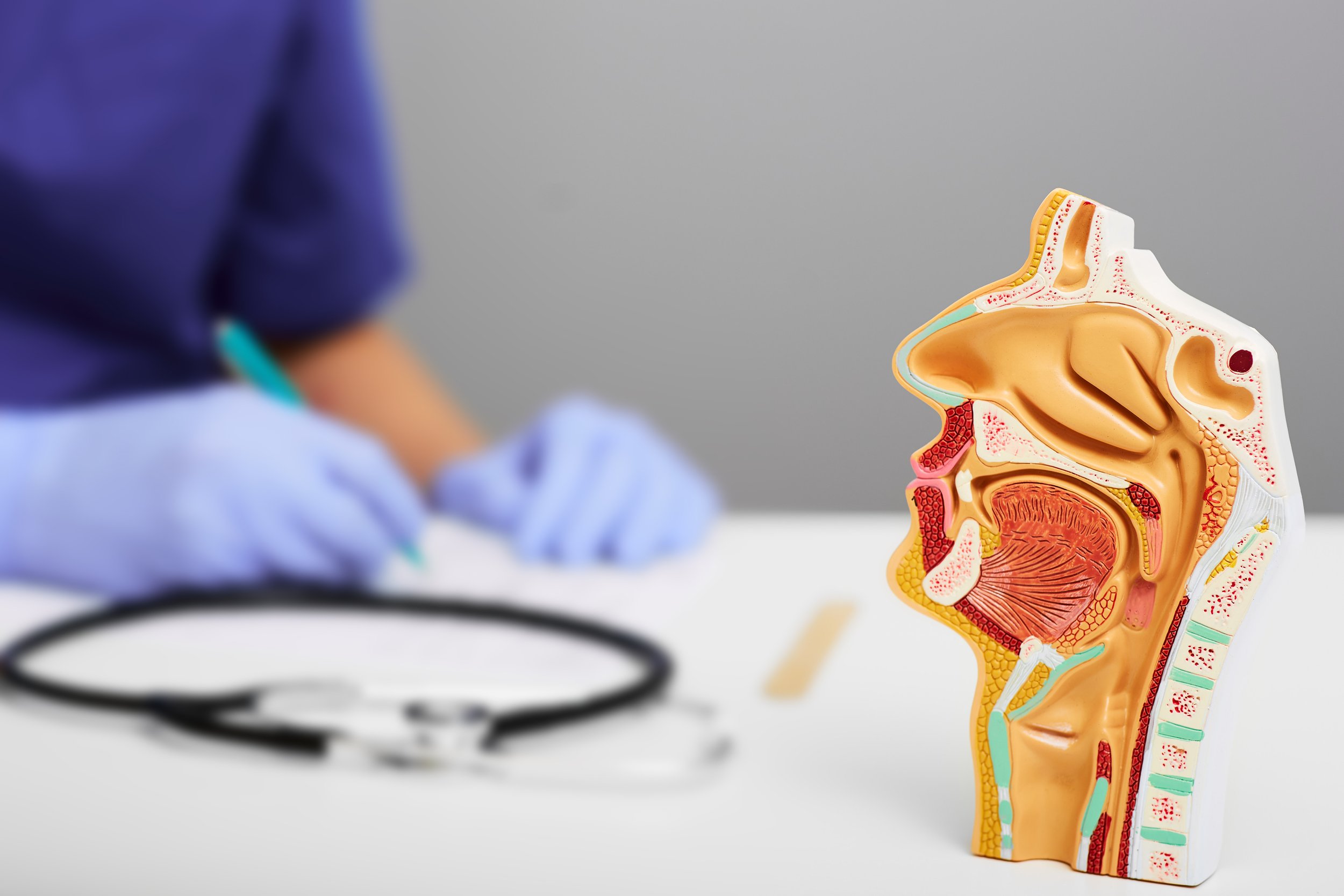Evolve Your Otolaryngology Practice with Telehealth
If your patients are complaining of morning headaches, daytime fatigue, lack of mental acuity and have been told they snore intermittently throughout the night, they may be suffering from sleep apnea, a serious sleep health condition that affects over 30 million people in the United States. While sleep apnea has both surgical and non-surgical treatment options, the initial screening and diagnosis will likely require the expertise of a sleep specialist. This first step in navigating the current sleep healthcare system may reveal disjointed silos of care that are frustrating for your patients and inefficient for your practice.
More Than “Just Snoring”
The symptoms of sleep apnea go beyond its characteristic nighttime snoring and gasping. Repeated awakenings during the night make getting healthy uninterrupted sleep nearly impossible. Sleep apnea robs the body of the deep restorative stages of sleep and when left untreated puts your patients at risk for more serious comorbidities such as cardiovascular disease, hypertension and diabetes. Screening and diagnosing sleep apnea goes beyond restoring sleep; it is imperative to mitigating the risk of more serious health problems down the road.
Screening for Sleep Apnea
The healthcare standard for initial screening of sleep apnea uses a questionnaire with the acronym STOP-Bang to further investigate a patient’s symptoms. A “yes” response to 5 or more of these key elements will determine whether a home sleep study or in-lab sleep study (polysomnography) is the next diagnostic step:
Snoring loudly
Tiredness, fatigue or excessive daytime sleepiness
Observation by someone else of stopped breathing
Having high blood Pressure
BMI greater than 35
Age over 50 years
Neck circumference larger than 16 inches (40 cm)
Gender (sleep apnea is far more common among males)
Home Sleep Study Assessment
Based on the results from the initial screening, most of your patients will qualify for a home sleep study. Specialized equipment must be picked up from a sleep center and used for one night. Included in the study are nasal tubes that attach with a mask to measure airflow, a chest belt that measures respiration and a finger clip to measure blood oxygen levels. The sleep center is another appointment and potential co-pay for your patients, and they may not offer coaching or support in setting up the equipment for the home sleep study. In most cases, a home sleep study will provide you with enough information to best determine a treatment plan for your patients, but the coordination and follow-up between offices is usually left up to the patient. It’s no surprise that the CDC reports that nearly 80 percent of people with sleep apnea go undiagnosed.
Sleep Apnea Treatment Options
Continuous Positive Airway Pressure therapy, better known as CPAP, is usually the first treatment option for sleep apnea and is considered the gold standard. CPAP machines work by pressurizing and filtering the air and delivering it through a hose and mask that you wear on your face while sleeping. CPAP keeps airways open and improves breathing quality which leads to improved sleep and better overall health. If CPAP is not proven to be effective or if your patient can’t adapt to using it, there are several surgical options that may be viable based on patient needs and level of sleep apnea severity.
If it is determined that there is nasal blockage restricting breathing, septoplasty may be an option. In this surgical procedure, the cartilage and bone between the nostrils, known as the septum, is straightened out. If there is another blockage caused by soft tissue, Uvulopalatopharyngoplasty (also referred to as UPPP) may be performed. In this surgery, soft tissue that may obstruct the airway is removed. This can include the uvula, the tissue flap at the back of the throat, soft palate tissue, tissue at the sides of the throat, or removal of the tonsils or adenoids. The newest surgery to treat sleep apnea is known as hypoglossal nerve stimulation. This surgery implants a device in the neck and chest wall that monitors breathing and delivers pulses that keep the tongue from blocking the airway. A small remote control allows your patient to turn the device on at night and off in the morning. As with any surgical procedure, there are some risks involved. Your practice can best discuss the pros and cons of all the available treatments with your patients to determine the best treatment option.
Telehealth Simplifies the Sleep Apnea Journey
The process of screening, diagnosing and treating sleep apnea involves visits to multiple isolated specialists and labs who work without a coordinated, comprehensive care plan. Because the time to treat patients can take 3-6 months, the current system feels cumbersome, lacks urgency and can lead to patient disengagement. Navigating these silos of care is time consuming and costly for your patients, and inefficient for your practice. Without the support of a coordinated care team, the number of people with sleep apnea continues to grow despite the many available treatments.
BetterNight offers end-to-end telehealth treatment that combats the inefficiencies of today’s current sleep health system by managing all sleep concerns in a virtual one stop shop. The BetterNight team includes over 300 sleep health professionals and specialists including Board-registered polysomnographic technicians, respiratory therapists, Cognitive Behavioral Therapy counselors and data analysts.
A Trusting Healthcare Partner
By offering sleep studies conveniently in the home, and providing full diagnosis within 2 weeks, patients are less likely to lose interest and will become more active participants in their treatment. BetterNight also customizes their solution based on your practice needs, so you get the support you need, allowing you more time with your patients. All patient information is shared back to your practice with clear, transparent reporting and tracking, in collaboration as your valued care partner.
By treating sleep apnea with the support of BetterNight’s telehealth platform, your practice will be better equipped to successfully manage your patients’ sleep apnea journey, restoring both better sleep and overall health.

